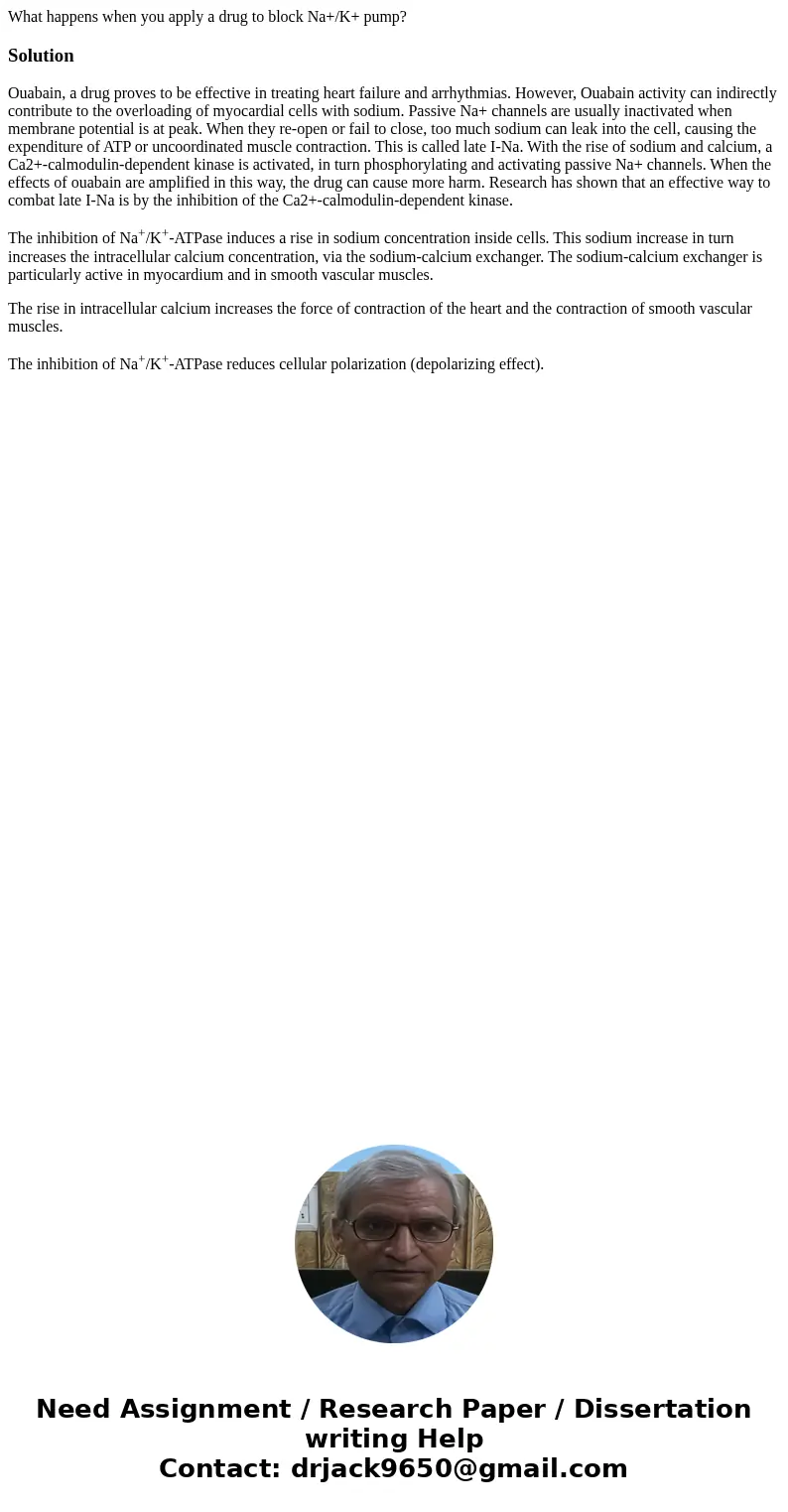What happens when you apply a drug to block NaK pumpSolution
What happens when you apply a drug to block Na+/K+ pump?
Solution
Ouabain, a drug proves to be effective in treating heart failure and arrhythmias. However, Ouabain activity can indirectly contribute to the overloading of myocardial cells with sodium. Passive Na+ channels are usually inactivated when membrane potential is at peak. When they re-open or fail to close, too much sodium can leak into the cell, causing the expenditure of ATP or uncoordinated muscle contraction. This is called late I-Na. With the rise of sodium and calcium, a Ca2+-calmodulin-dependent kinase is activated, in turn phosphorylating and activating passive Na+ channels. When the effects of ouabain are amplified in this way, the drug can cause more harm. Research has shown that an effective way to combat late I-Na is by the inhibition of the Ca2+-calmodulin-dependent kinase.
The inhibition of Na+/K+-ATPase induces a rise in sodium concentration inside cells. This sodium increase in turn increases the intracellular calcium concentration, via the sodium-calcium exchanger. The sodium-calcium exchanger is particularly active in myocardium and in smooth vascular muscles.
The rise in intracellular calcium increases the force of contraction of the heart and the contraction of smooth vascular muscles.
The inhibition of Na+/K+-ATPase reduces cellular polarization (depolarizing effect).

 Homework Sourse
Homework Sourse